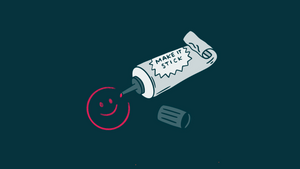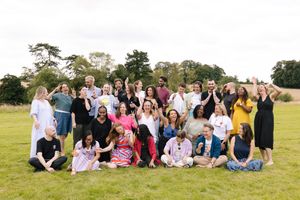
I had coffee with an old friend last week who works in cybersecurity at a big bank you’ve definitely heard of. He was telling me that he was about to resign and that on his way out he was going to “really stick it to them”.
When I asked how he’d be sticking it to them, he told me his plan was to “totally nail an impossibly hard job and then resign immediately”. You can tell a lot about Friend from this, like how sweetly diligent he is, for instance, but also how undervalued he must feel to believe that doing a stellar job was the best way to flip Big Bank the bird.
Turns out Big Bank is mid digital transformation and all the ‘innovation stuff’ is happening on the floor beneath Friend. Also on the floor beneath Friend are really nice things like — wait for it — swanky toilets that he’s not allowed to use. In fact, being caught down on the transformation floor (not just using the loo) results in disciplinary action. Turns out the toilets are a single item in a long litany of emotionally unintelligent Big Bank antics that add up to a kind of ‘innovation apartheid’ that’s pushing Friend out, and on to better things.
This is bad news for Big Bank, because Friend is talented, kind and as we’ve established, capable of doing impossibly hard things. He also works in cybersecurity which is pretty important for a bank in 2019… but apparently not important enough to be on the floor with the good loo.
This is one of hundreds of stories I could pull from a sad hat to illustrate why Abi and I founded Brink. Everywhere we looked we saw good people grappling with (or fetishising) disruption and ultimately taking expensive steps in an attempt to get on the right track — those swanky loos are as costly as they are ineffective.
Despite these efforts, much of what we saw amounted to little more than innovation theatre — it looked shiny and new, seemed to hold great promise, but when the show was over, nothing had changed.
Typically, we observed, this was because innovation was planned and neatly metered out as a predictable, hyper-rational job to be done:
Set up a lab, hire people, state a bold ambition and tell them to ‘go’, right? Or set up a fund, announce it with a shiny brand, invite applications and wait for interest to roll in, right? Or pick out the high performers in your company, train them in human-centred design and they’ll solve the future, right?
Wrong, wrong and wrong.

Innovation isn’t an inputs-in-outputs-out gig; there’s way more to it all than the double diamonds, build-measure-learn cycles and divergent/convergent methodologies suggest… and even though we love methods like these dearly, at Brink, we believe they’re just the start.
We know the real work sits at the intersection of innovation and the behavioural sciences, we call the intersection Behavioural Innovation and it powers the way we see the world and the work we do.
Behavioural Innovation applies classic innovation methodologies along with psychological, cognitive, emotional, cultural and social factors. It allows for irrational behaviour and attempts to understand why this may be the case.
These are the kinds of questions we like to think about at Brink:
- We know that behaviour is shaped by context, so how might we create the optimal context for curiosity, risk-taking, experimentation and courage?
- We know that human brains experience a limbic response to uncertainty that’s close to pain. What does that tell us about how we might best lead teams through uncertainty? And how about our own response to uncertainty, can we retire our lizard brain?
- We know that day-to-day, working to innovate requires us to listen well, learn (even when the results invalidate our own ideas) and build on ideas that weren’t part of the original plan. How can we practise and master these meta skills?
We’ll be sharing more about Behavioural Innovation in the coming months with more posts from the team on topics about ‘your brain on innovation’, innovation fallacies and innovation Mindsetting.
For now, tell us what you think, we’d love to hear from you.





